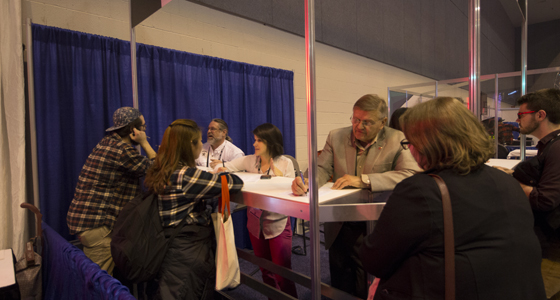Q: Dr. Ima, the job I applied for is out-of-state. I was informed that my first interview will be done via Skype. I have never done a Skype interview before and I want to make sure it goes as smoothly as an in-person interview. Any advice?
A: Congratulations on your interview! Due to the high cost of travel and improvements in digital communication, more and more production and performance companies are relying on systems like Skype to conduct long-distance interviews. Whether you are a frequent user of this technology or it is your first time to be digitally connected with your potential new employer, please consider taking these steps to make your digital interview the best possible experience for all involved.
1. Test out your system with a friend. Connect with a roommate or your parents a couple of times and get their feedback about how effective the system is working. Become aware of camera placement and your necessary volume. Even with this preparation, be prepared to adjust to last- minute changes as it seems that no two connections are exactly alike.
2. Be aware of your background. The camera view taken by your computer is not selective. The system can be adjusted some, depending on your physical placement in relation to the camera, but the whole view of what is behind you should be considered. Whether it is a poster hanging on the wall of your favorite metal band or that deer head and antlers that accidently perfectly align with your own head, awkward camera placements and distracting backgrounds can ruin your interview.
3. Consider your lighting and what you are wearing. Computers are often placed in rooms so that a window is located behind the operator. While this diffused back light can be helpful to task work in front of the operator, the back light can totally wash out the camera view being received by the interviewer. The doctor conducted a Skype interview where the candidate for the position appeared to only be a bouncing head in a sea of white. The combination of his white shirt and a large picture window backlighting the whole scene was difficult to overcome.
4. Just as with a proximity interview, knowing who will be at the other end of the conversation is helpful. Some interview teams (search committees) will be gathered in a room where a wide-angle camera is in use. At the start of the interview, each person present is likely to introduce themselves. You can help yourself by taking note of each name on a quick sketch of the table layout, matching the order that you see on the screen. Then when someone is speaking, you can look at your layout to remember their name for a better connection.
5. Sometimes, different members of the search committee will take the primary seat to ask their question with the best possible camera view from their end, and then switch seats as questions are asked. This type of Skype interview seems a bit like speed dating but can be effective.
6. Be aware that despite improved quality of systems, there can be an effective delay between your speech pattern and the interviewers receiving your responses and vice versa. This delay is best overcome if you slow your response rate just a bit and then pause after each answer to let the interviewers respond.
Advance preparation and an awareness of how your location and personality are being broadcast to your interviewer is a real advantage for you to seize.
